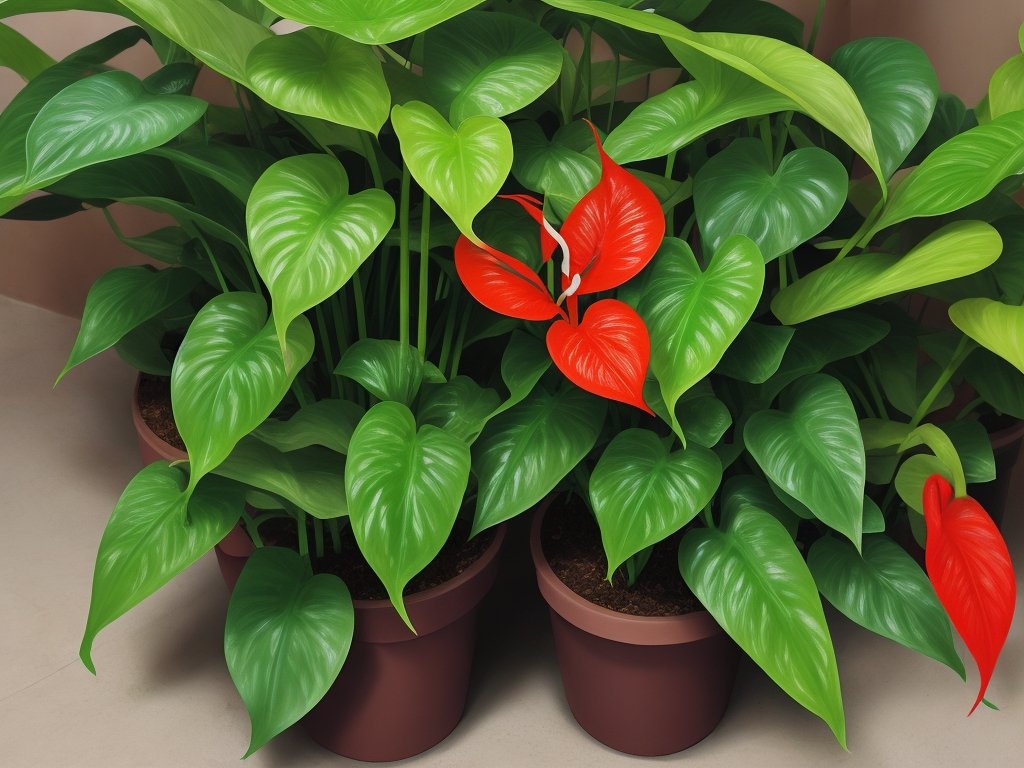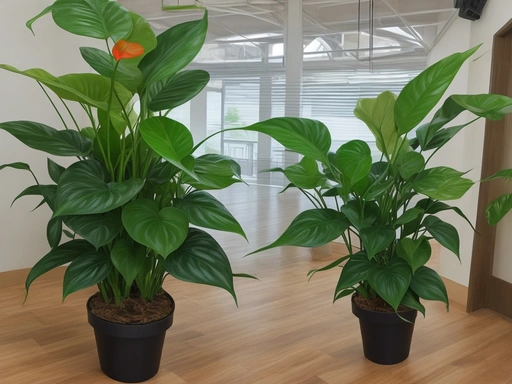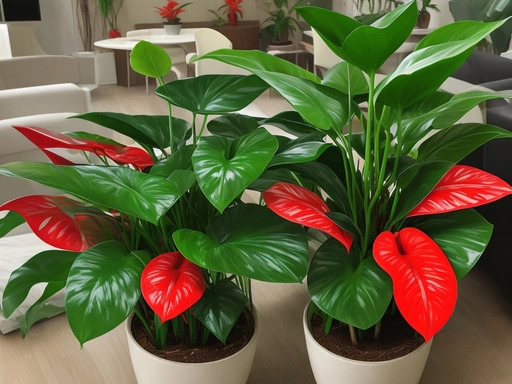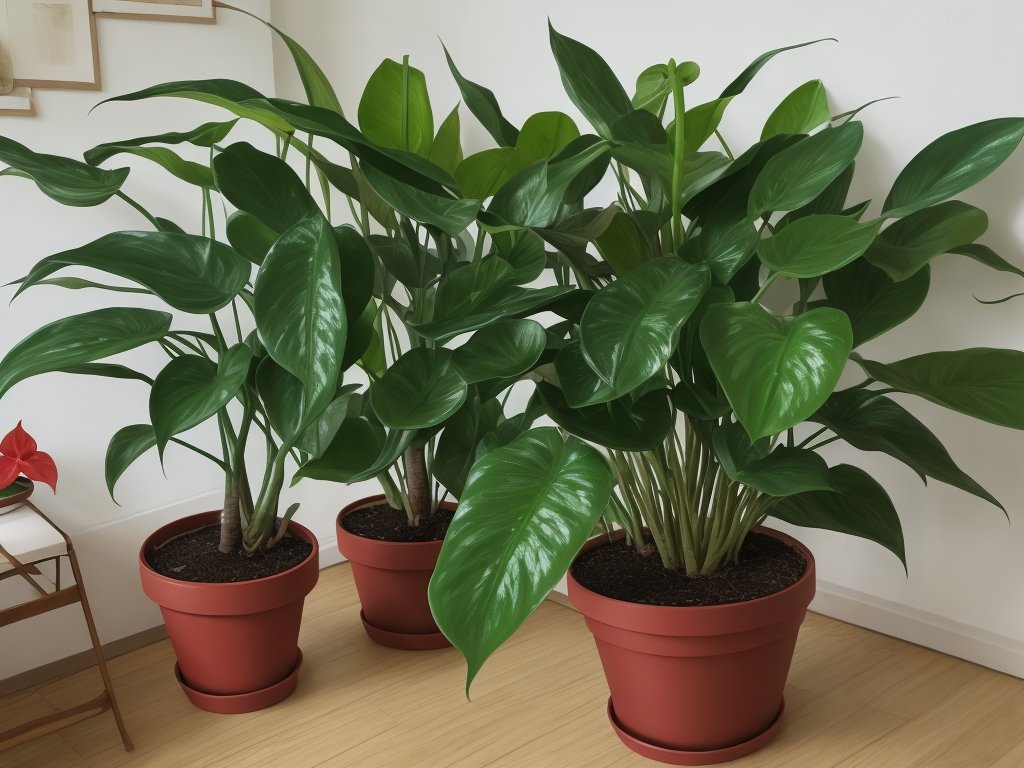Anthurium Plant Care Tips That Will Thrive
Key Takeaways:
- Anthurium plants thrive in bright, indirect light.
- Maintain a consistent watering schedule to prevent overwatering or underwatering.
- Regularly fertilize your Anthurium plant to promote healthy growth.
- Keep an eye out for common pests like aphids and mealybugs and take appropriate measures to control them.
Welcome to the world of Anthurium plants! Whether you’re an avid gardener or just starting your plant parenthood journey, these beautiful tropical plants are sure to captivate your heart and bring a touch of elegance to any space. In this article, I’ll be sharing some valuable tips and tricks on how to care for your Anthurium plants, from choosing the right variety to providing the ideal growing conditions and handling common plant problems.
So, let’s dive in and unlock the secrets to keeping your Anthurium plant thriving and flourishing!
| Aspect | Requirement |
| Sunlight | Bright, indirect light |
| Temperature | 60-75°F (15-24°C) |
| Watering | Keep the soil moist but not waterlogged |
| Humidity | High humidity (at least 50%) |
| Soil | Well-draining potting mix |
| Fertilizer | Use a balanced, water-soluble fertilizer monthly |
| Pruning | Remove dead or damaged leaves and flowers |
| Pests | Watch out for mealybugs and spider mites |
| Propagation | Divide rhizomes or take stem cuttings |
Choosing the Right Anthurium Plant
To choose the right Anthurium plant, consider different types available and factors to consider when choosing.
Different Types of Anthurium Plants
There are many different types of Anthurium plants, each with its own unique characteristics. Some popular varieties include Anthurium andraeanum, which has glossy heart-shaped leaves and vibrant, spathes in various colors.
There’s also Anthurium clarinervium, known for its velvety leaves with striking white veins.
Another popular type is Anthurium scherzerianum, which produces bright red flowers. Anthurium veitchii stands out with its large, leathery leaves and white veins.
These are just a few examples, but there are many more beautiful Anthurium varieties to explore and choose from.

Factors to Consider When Choosing an Anthurium Plant
When choosing an Anthurium plant, there are a few factors to consider. First, think about the size of the plant and whether it will fit in your space.
Consider the different types of Anthurium plants available, such as flowering varieties or those with unique foliage.
Also, take note of the plant’s care requirements, including light, temperature, and humidity needs. Lastly, consider your own skill level and experience as some Anthurium varieties may be more challenging to care for than others.

Providing the Right Growing Conditions
To ensure the healthy growth of your Anthurium plants, it’s essential to provide the right growing conditions.
Light Requirements for Anthurium Plants
Anthurium plants prefer bright, indirect light.
They don’t like direct sunlight as it can scorch their leaves.
Place your Anthurium in a spot that receives filtered or dappled light, like near a north or east-facing window.
You can also use a sheer curtain to diffuse the sunlight.
Just make sure it gets enough light to thrive!
Temperature and Humidity Needs
Anthurium plants thrive in temperatures between 60-85°F (15-29°C).
They prefer warmer temperatures but cannot tolerate extremes.
Maintain a humidity level of 50-60% for optimal growth.
Use a humidifier or place a tray of water near the plant to increase humidity.
Avoid placing them in drafts or near heating/cooling vents.
Soil and Potting Mix for Anthurium Plants
For Anthurium plants, it’s important to choose a well-draining potting mix.
A mix consisting of peat moss, perlite, and pine bark is a good choice.
Avoid heavy or compacted soils that can hold too much moisture.
The mix should be slightly acidic with a pH level of around 5.5 to 6.5. Remember to repot your Anthurium every 1-2 years to ensure proper growth.
Watering and Feeding
Watering an Anthurium plant requires regularity and consistency.
Feeding the plant with the right fertilizer is essential for its healthy growth.
How Often to Water an Anthurium Plant
Anthurium plants prefer to be kept slightly moist but not overly saturated.
Watering once a week is a good starting point, but it’s important to monitor the soil moisture level.
Stick your finger about an inch into the soil, and if it feels dry, it’s time to water.
Adjust the frequency based on your specific plant’s needs and the environmental conditions.
Don’t forget to provide proper drainage to avoid waterlogging.

Watering Tips and Mistakes to Avoid
Watering an Anthurium plant can be tricky, but here are a few tips to help you get it right.
First, make sure to water the plant thoroughly until water drains out of the bottom.
Avoid overwatering, as this can lead to root rot.
Instead, wait until the top inch of the soil feels dry before watering again.
It’s also important to use room temperature water and avoid getting water on the leaves, as this can cause spotting or fungal diseases.
Finally, be mindful of the potting mix – avoid using heavy soil that retains too much water.
Stick to a well-draining mix to keep your Anthurium happy and healthy.
Fertilizing Anthurium Plants
Fertilizing Anthurium plants is important for their growth and overall health. I recommend using a balanced, water-soluble fertilizer with a ratio of 20-20-20.
Apply it every two to four weeks during the growing season.
Make sure to dilute the fertilizer according to the package instructions and avoid over-fertilizing, as it can harm the plant. Additionally, consider using a fertilizer specifically formulated for blooming plants to encourage more vibrant flowers.

Pruning and Propagation
Pruning helps promote growth while propagation allows you to create new plants.
Pruning Anthurium Plants to Promote Growth
Pruning Anthurium plants can help promote growth in several ways.
Firstly, it allows the plant to focus its energy on healthy new growth instead of maintaining old or damaged leaves.
Secondly, removing dead or diseased foliage prevents the spread of pests or diseases.
Thirdly, pruning can shape the plant and encourage fuller, bushier growth.
Just be sure to use clean, sharp pruning shears and cut at an angle to minimize damage.
Propagating Anthurium Plants through Division
To propagate anthurium plants through division, start by carefully removing the plant from its pot. Gently separate the root ball into sections, making sure each section has healthy roots and at least one shoot or leaf.
Plant each division in a separate pot with well-draining soil and water thoroughly.
Keep the newly divided plants in a warm and humid environment until they establish roots.
Propagating Anthurium Plants through Stem Cuttings
To propagate an Anthurium plant through stem cuttings, start by selecting a healthy and mature plant.
Using a clean and sharp knife, cut a stem with at least two or three nodes.
Remove any lower leaves and dip the cut end of the stem in a rooting hormone powder.
Plant the stem in a well-draining potting mix and keep it in a warm and humid environment.
Mist the cutting regularly and wait for roots to develop before transplanting into a larger pot.
Voila! You have successfully propagated your Anthurium plant through stem cuttings.
Dealing with Common Anthurium Plant Problems
Let’s tackle the most common problems you might face with your Anthurium plant.
Common Pests and Diseases
Common pests that can affect anthurium plants include aphids, mealybugs, spider mites, and scale insects.
These pests can cause damage to leaves and flowers, such as discoloration, curling, and wilting.
Fungal diseases, such as root rot and leaf spot, are also common issues.
Regularly inspecting your plants and taking preventive measures can help keep pests and diseases at bay.
Yellowing Leaves and Leaf Spots
Yellowing leaves and leaf spots on your Anthurium plant can be caused by various factors.
Overwatering or underwatering, fungal or bacterial infections, nutrient deficiencies, and insect pests are common culprits.
To address yellowing leaves, adjust watering and ensure proper drainage.
Treat leaf spots with fungicides or remove affected leaves.
Maintain a balanced fertilizing schedule and inspect for pests regularly.
Browning or Wilting Flowers
Browning or wilting flowers in Anthurium plants are usually a sign of improper care. It could be due to over or underwatering, excessive sunlight, or pests.
To prevent this, ensure proper watering, provide adequate shade, and regularly inspect for pests.
Frequently Asked Questions about Anthurium Plant Care
How often should I repot my Anthurium plant?
Anthurium plants generally need to be repotted every 1-2 years. However, it’s important to pay attention to the signs that your plant is giving you.
If you notice roots growing out of the drainage holes or if the plant becomes root-bound, it’s time to repot.
Can I grow an Anthurium plant outdoors?
Yes, you can grow an Anthurium plant outdoors, but it depends on your climate.
Anthuriums thrive in warm and humid environments, so if you live in a region with mild temperatures and high humidity, you can give it a try.
Just make sure to provide shade from direct sunlight and protect it from extreme weather conditions.
How long do Anthurium plants typically live?
Anthurium plants typically live for several years, with proper care and maintenance. On average, they can live anywhere from 3 to 5 years, but some can live even longer.
Providing the right growing conditions, regular watering and feeding, and addressing any potential problems can help ensure the longevity of your Anthurium plant.
Final Verdict
Caring for an Anthurium plant requires attention to details such as choosing the right plant, providing the correct growing conditions, proper watering and feeding, regular pruning and propagation, and addressing common problems. By understanding the different types of Anthurium plants and considering factors like light, temperature, soil, and watering frequency, you can ensure their health and longevity.
Remember to prune to promote growth and propagate for new plants.
Stay vigilant against common pests and diseases, and address any leaf discoloration or wilting flowers promptly. By following these care tips, your Anthurium plants will thrive and bring beauty to your home or garden for years to come.







